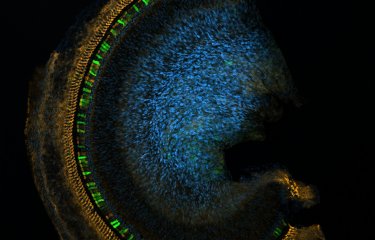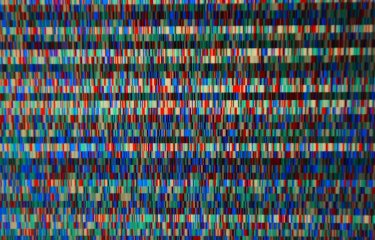A team from the Institut Pasteur, working with a Spanish team from the Autonomous University of Madrid, has discovered a new group of DNA polymerases that can start DNA replication without the help of other proteins. All previously known DNA polymerases needed a primer, which could come either from another protein or from a pre-existing DNA or RNA fragment. The discovery of a DNA polymerase that can start DNA synthesis on its own is important from an evolutionary and biotechnological viewpoint. The findings were published in the journal Cell Reports.
DNA polymerases are enzymes in cells or viruses which are involved in the process of DNA replication. Since the first DNA polymerase was discovered in 1958, seven families of DNA polymerase have been described (A, B, C, D, X, Y and RT), each with different biochemical properties. But they all have one thing in common: they can only add new nucleotides (the building blocks of DNA) to a strand of DNA or RNA if they have a primer and an existing strand of complementary DNA to use as a template.
Mart Krupovic from the Institut Pasteur and Modesto Redrejo from the Autonomous University of Madrid, together with their teams, have discovered a group of family B DNA polymerases that can directly add a first nucleotide opposite its complementary nucleotide to kick-start the synthesis process. These polymerases do not need the help of a primer to add new nucleotides. The possibility of copying DNA without the need for a primer may be useful for DNA amplification, and the simplicity of this new replication mechanism could have a number of applications. The scientists have therefore submitted a European patent application.
These newly identified independent DNA polymerases are encoded by a new group of mobile genetic elements discovered by Mart Krupovic in bacteria and given the name "pipolins", based on the expression primer-independent polymerase. Pipolins are the first self-replicating mobile genetic elements discovered in bacteria. Further research on pipolins could shed new light on gene transfer mechanisms in microorganisms.
Source
Primer-Independent DNA Synthesis by a Family B DNA Polymerase from Self-Replicating Mobile Genetic Elements, Cell reports, November 7, 2017.
ModestoRedrejo-Rodríguez1, Carlos D. Ordóñez1, Mónica Berjón-Otero1, Juan Moreno-González1, Cristian Aparicio-Maldonado1, Patrick Forterre2, Margarita Salas1, Mart Krupovic2
1. Centro de Biología Molecular “Severo Ochoa,” Consejo Superior de Investigaciones Científicas and Universidad Autónoma de Madrid, Universidad Autónoma, Cantoblanco, 28049 Madrid, Spain
2. Institut Pasteur, Unité Biologie Moléculaire du Gène chez les Extrêmophiles, Paris, France





